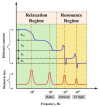Progress of Polymer-Based Dielectric Composites Prepared Using Fused Deposition Modeling 3D Printing
- PMID: 37836352
- PMCID: PMC10574487
- DOI: 10.3390/nano13192711
Progress of Polymer-Based Dielectric Composites Prepared Using Fused Deposition Modeling 3D Printing
Abstract
Polymer-based dielectric composites are of great importance in advanced electronic industries and energy storage because of their high dielectric constant, good processability, low weight, and low dielectric loss. FDM (Fused Deposition Modeling) is a greatly accessible additive manufacturing technology, which has a number of applications in the fabrication of RF components, but the unavoidable porosity in FDM 3D-printed materials, which affects the dielectric properties of the materials, and the difficulty of large-scale fabrication of composites by FDM limit its application scope. This study's main focus is on how the matrix, filler, interface, and FDM 3D printing parameters influence the electrical properties of FDM-printed polymer-based dielectric composites. This review article starts with the fundamental theory of dielectrics. It is followed by a summary of the factors influencing dielectric properties in recent research developments, as well as a projection for the future development of FDM-prepared polymer-based dielectric composites. Finally, improving the comprehensive performance of dielectric composites is an important direction for future development.
Keywords: FDM; composite; dielectric; polymer.
Conflict of interest statement
The authors declare no conflict of interest.
Figures















References
-
- Kumar S., Saeed G., Zhu L., Hui K.N., Kim N.H., Lee J.H. 0D to 3D carbon-based networks combined with pseudocapacitive electrode material for high energy density supercapacitor: A review. Chem. Eng. J. 2021;403:126352. doi: 10.1016/j.cej.2020.126352. - DOI
-
- Xie Z., Liu D., Xiao Y., Wang K., Zhang Q., Wu K., Fu Q. The effect of filler permittivity on the dielectric properties of polymer-based composites. Compos. Sci. Technol. 2022;222:109342. doi: 10.1016/j.compscitech.2022.109342. - DOI
-
- Wu X., Chen X., Zhang Q.M., Tan D.Q. Advanced dielectric polymers for energy storage. Energy Storage Mater. 2022;44:29–47. doi: 10.1016/j.ensm.2021.10.010. - DOI
-
- Palani Velayuda Shanmugasundram H.P., Jayamani E., Soon K.H. A comprehensive review on dielectric composites: Classification of dielectric composites. Renew. Sustain. Energy Rev. 2022;157:112075. doi: 10.1016/j.rser.2022.112075. - DOI
Publication types
Grants and funding
- 2022S099/Ningbo public welfare science and technology planning project
- 2021T3039/the STS Project of Fujian-CAS
- 2021T3047/the STS Project of Fujian-CAS
- 2021T3018/the STS Project of Fujian-CAS
- 2022T3009/the STS Project of Fujian-CAS
- 2022T3019/the STS Project of Fujian-CAS
- 2022T3045/the STS Project of Fujian-CAS
- 2022T3064/the STS Project of Fujian-CAS
- 2022H4020/the regional development project of Fujian
- 2023H4023/the regional development project of Fujian
- 2021-ZD-281/the Major Project of Science and Technology in Fuzhou
- 2023Y4021/Fujian Provincial Department of Science and technology joint innovation project
- 2020Y4018/Fujian Provincial Department of Science and technology joint innovation project
- MFK23014/the Research Project of Fashu Foundation of Fujian
- 2022BLG011/the Beilun District Key Core Technology Research Project
LinkOut - more resources
Full Text Sources

